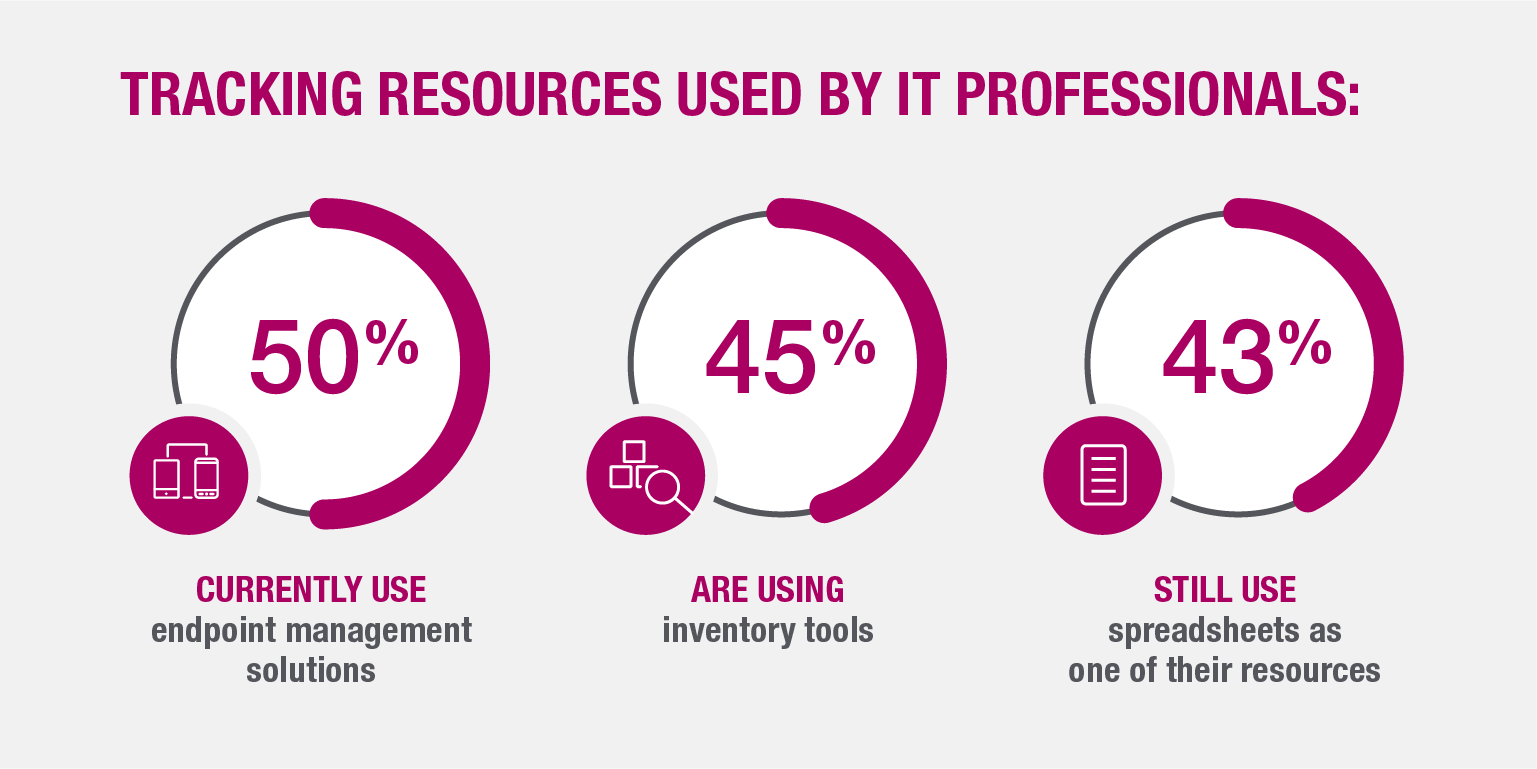Study: How 1,600 IT Professionals Are Managing Assets
 Ivanti recently polled approximately 1,600 IT professionals in order to gain deeper insights into how IT assets are managed within organizations. Here are some of the survey's findings.
Ivanti recently polled approximately 1,600 IT professionals in order to gain deeper insights into how IT assets are managed within organizations. Here are some of the survey's findings.
Types of Devices
IT professionals have the daunting task of managing a wide variety of IT assets. These devices include:
- Laptops (90%)
- Desktops (87%)
- Network devices (80%)
- Mobile phones (59%)
It might seem surprising that mobile phone management is so low, but consider the fact that many companies employ a BYOD (bring your own device) policy, and therefore IT teams would not need to manage their employees' personal devices.
Tracking Assets
Now that we have a baseline for the types of devices IT professionals manage, let's take a look at their methods for tracking assets.
- Endpoint management solution (50%)
- Inventory tools (45%)
- Spreadsheets (43%)
 Once again, the last bullet on this list is surprising—but not in a good way. Almost half of respondents are still using spreadsheets to manage assets, which lends itself to human error much more than automated solutions such as Ivanti's Asset Manager.
Once again, the last bullet on this list is surprising—but not in a good way. Almost half of respondents are still using spreadsheets to manage assets, which lends itself to human error much more than automated solutions such as Ivanti's Asset Manager.
Another alarming statistic came from the answer to this question:
Do you manage the whole asset lifecycle from procurement and on-boarding to decommissioning and disposal?
- Yes (44%)
- Partially (43%)
- No (13%)
In other words, more than half of IT professionals do not manage the whole asset lifecycle. This could cause redundant assets, security risks, and costly purchases.
For those that responded "Yes" and "Partially," we asked what they are using to track their assets. Here's what they said:
- Multiple systems and repositories (39%)
- Inventory spreadsheets (38%)
- Asset management repository/database (37%)
- Separate contract management system (22%)
Replacing Assets
When devices become outdated, they need to be replaced. But determining the appropriate time to replace assets could be a bit challenging. Here are the responses to the question:
When does your organization decide a device needs to be replaced, permanently removed from the network, or decommissioned?
- Replace a device when doing a scheduled hardware refresh (52%)
- Replace a device when a user reports an incident or problem (22%)
Summary
Although IT Service Management (ITSM) and IT Asset Management (ITAM) have historically been separate disciplines, their processes and data are highly interrelated. This survey looks at the challenges that are hindering organizations from aligning their ITSM and ITAM processes.

